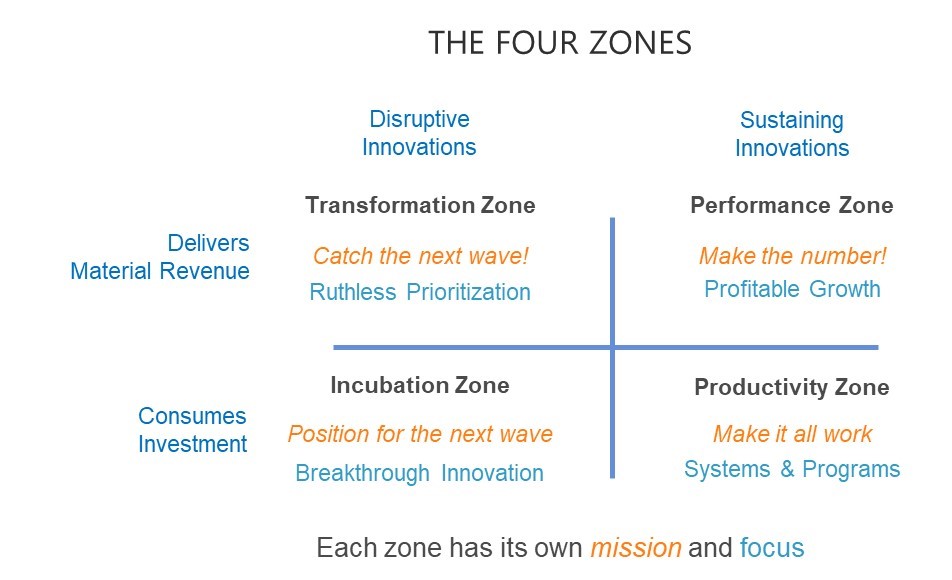The Traction Gap Framework: It’s Not Just For Startups
July 24, 2019
PUBLISHED BY Bruce Cleveland
In February this year, we released, Traversing the Traction Gap. The purpose of the book is to provide a roadmap — the Traction Gap Framework — for entrepreneurs so they can successfully go from ideation to scale.
In it, I shine a bright light on the go-to-market phase, a period of time when more than 80% of all startups fail. I wrote the book as a “how-to” guide to provide entrepreneurs with something tangible to help them during the murky early stage go-to-market phase, so venture firms are willing to invest in them.
 We are happy that it’s been a best-seller (see reviews here) and I have been graciously invited to lecture on the Traction Gap Framework principles at universities such as Babson, Columbia, Stanford, University of Chicago, and others.
We are happy that it’s been a best-seller (see reviews here) and I have been graciously invited to lecture on the Traction Gap Framework principles at universities such as Babson, Columbia, Stanford, University of Chicago, and others.
One of the questions I’ve received since the book came out is whether the Traction Gap Framework can be applied to companies that are no longer startups. My response is an unequivocal “yes”! However, to explain, I need to refer to a book published by my Wildcat partner, Geoffrey Moore, iconic author of Crossing the Chasm.
Zoning to Win
In Geoff’s latest book titled, Zone to Win, he describes an issue most incumbent companies face at one time or another: a new product enters the market and threatens the incumbent. The typical corporate response is to reach into an innovation lab — or skunk works teams — take what is there and quickly release the product into the hands of the marketing and sales teams so they can eliminate the competitive threat.
In most cases, this proves to be highly ineffective. A recent article by Harvard Business Review points out many of the reasons innovation labs fail, including: lack of alignment with the business, lack of metrics to track success, and lack of balance on the team.
To address this common and challenging issue, Geoff worked with Marc Benioff, CEO of Salesforce, and other notable CEOs to create a much more effective way for companies to respond. In Zone to Win, Geoff defines and describes four zones that comprise a company: performance, productivity, incubation, and transformation.
- Performance — contains the products, processes, personnel — and business model — that currently drives the majority of a company’s revenue.
- Productivity — contains the people and processes that support the products and personnel in the performance zone.
- Incubation — contains the people building a new product or service and is classically located inside a development organization.
- Transformation — a new organizational construct. Contains a “virtual” team of people who come together from various business functions inside the company — product management, sales, marketing, legal, finance, support, etc. — to ready a new product for entry into the performance zone.
Here is how these zones appear graphically:

I highly recommend that every large company executive team read Zone to Win because the problem it addresses is universal.
The Traction Gap Framework and Large Companies
This brings me to how the Traction Gap Framework can apply to an incumbent company.
The incubation zone is essentially a startup housed inside a large company and this is where the Traction Gap Framework is applicable. All new products/product lines must go through the three phases defined in the Traction Gap Framework: go-to-product, go-to-market, and go-to-scale.

All of the framework valuation inflection points and the “market engineering” work I describe and define in Traversing the Traction Gap apply to products and teams inside the incubation zone.
The BIG difference is that the metrics I derived from successful SaaS companies and the key investment points that venture firms seek that I discuss in the book can be quite different from the objectives large companies are concerned with.
To make the Traction Gap Framework applicable for larger companies, teams inside these companies should simply replace the value inflection point metrics I discuss in the book and replace them with the company’s internal objectives and metrics of success. These might include revenue targets, gross margins, investment capital, investment hurdle rates, etc. But, while the metrics may be different the Traction Gap Framework value inflection points and architectural pillars (product, revenue, team and systems) are all still relevant.
If you’re a member of a team inside a large company tasked with bringing a new product to market, I would encourage you to consider using the Traction Gap Framework as a way to think about the process. And, again, I highly recommend you read Zone to Win; it offers a great way to organize the company so it can successfully introduce new products.
KEYWORDS